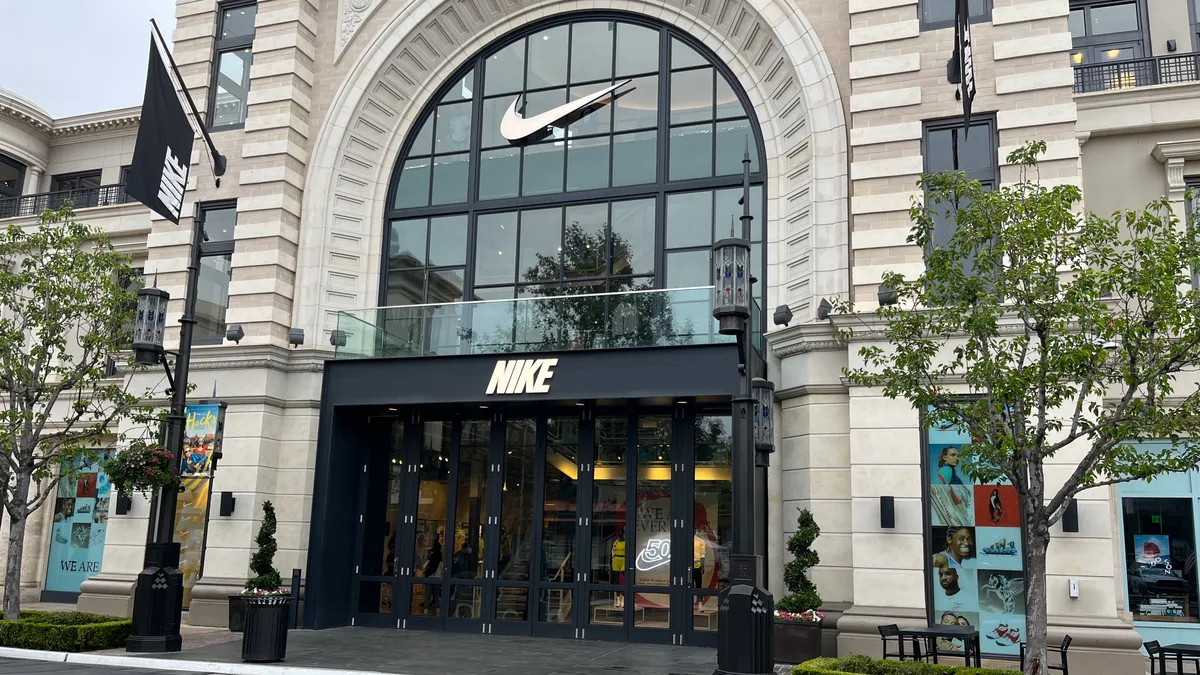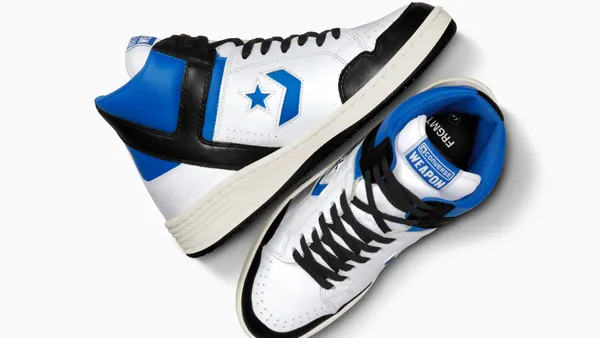Dive Brief:
- Unlike competitor Adidas, which posted a sales decline and a dismal annual guidance in its most recent earnings report, Nike on Tuesday posted 14% revenue growth, leading sales in the quarter up to $12.4 billion.
- DTC sales grew 17%, helped by a 20% increase in Nike’s digital sales, while wholesale grew 12%. Wholesale growth will slow over the next few quarters so Nike’s retail partners can work through excess inventory, CFO Matt Friend said on a call with analysts.
- Inventory, which has been a pain point for Nike in the past few quarters, was up 16% to $8.9 billion, which Friend called “tremendous progress.” Gross margin still took a 330 basis-point hit, primarily due to higher promotions to liquidate excess inventory.
Dive Insight:
Although Nike’s sales increase looks good on the surface, the double-digit growth partially comes from the retailer’s problems with inventory.
“While top-line growth has been very strong the past two quarters (Q2 +27%, Q3 +19%), much of this was driven by clearance of excess inventory,” Wedbush analysts led by Tom Nikic said in emailed comments.
For Nike’s next quarter, the retailer is projecting much smaller growth, in the flat to low single-digit range. And for the full fiscal year, Nike expects gross margin to fall 250 basis points — at the low end of its previous guidance — as it continues to shed inventory. SG&A is also expected to grow 10% for the year, which BMO Capital Markets flagged as a potential warning sign against Nike’s DTC strategy.
“We continue to fear the growth in operated overhead is simply the structural cost of growing Direct, which is a key reason we believe DTC drives margin pressure, not benefit,” analysts led by Simeon Siegel said in emailed comments.
Executives, however, say the retailer is benefiting from a higher mix of DTC and digital sales.
“We’ve always said that the margin contribution from our digital business is higher than the wholesale channels and that had fueled gross margin expansion from fiscal year '19 to fiscal year '22... not only is the channel mix a tailwind for us as we grow our digital business, but we actually think there's opportunities for us to improve the profitability of the digital channel,” Friend said.
There are other reasons for optimism. On a currency-neutral basis, Nike’s China business has returned to growth after a slew of bad quarters in the region, driven mostly by the country’s COVID policies. This marked the second straight quarter of growth in the China region, Nikic noted. And while inventory is still causing problems for Nike, it was up just 16% this quarter, compared to a 43% increase last quarter.
“We see several reasons for bullishness: inventory levels are rapidly normalizing, brand heat is high, China is in the early stages of a recovery, and they have multiple gross margin tailwinds for FY24 (freight, logistics, channel mix, China recovery, normalizing markdowns),” Nikic said.















